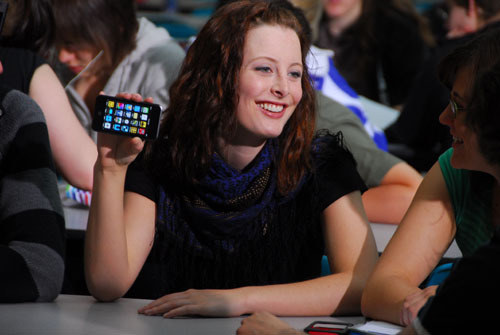
With Apple’s recent announcement that customers spent over $10 billion on the App Store in 2013, incluyendo más de $1 billion in December alone (over three billion apps were downloaded), there can be no doubt in anyone’s mind that the app culture just continues to rise. But as apps become more and more significant in our society, are they opening up our world or are they shutting it down? How are the advantages of face to face contact as relevant when we have cutting-edge, digital toys to interact with?
Hoy en La Búsqueda Global para la Educación, DR. Howard Gardner and Katie Davis discuss with me what they believe it means to be “app-dependent” versus “app-enabled,” and how life for today’s generation differs from life before the digital era. Gardner and Davis are the authors of the meticulously researched and thought-provoking book, La generación de aplicaciones: How Today’s Youth Navigate Identity, Intimacy, and Imagination in a Digital World.
Howard Gardner es el John H. y Elisabeth A. Hobbs profesor de Cognición y Educación de la Escuela de Graduados de Educación de Harvard. Katie Davis is an Assistant Professor at the University of Washington Information School, where she studies the role of digital media technologies in adolescents’ academic, sociales, and moral lives.
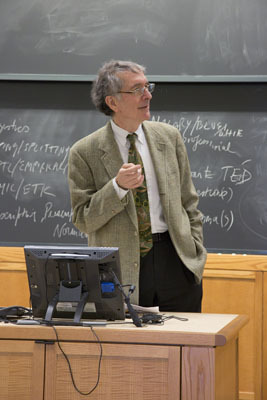
¿Cree usted que las aplicaciones aumentan la productividad? En caso afirmativo, Qué hay inconvenientes?
No hay duda de que las aplicaciones nos permiten hacer muchas cosas con mayor rapidez y así nos liberamos de asumir más tareas y tal vez más diferentes proyectos. What is important is that the user remains in charge–that the app enables productivity, rather than encourage dependency. En La generación de aplicaciones, we quote Alfred North Whitehead, who says that civilization advances by virtue of the number of important operations that one can perform without thinking about them. Sounds great, at first! But then we raise the question – who is to decide what is important? We’d like to keep that decision for ourselves, rather than turning it over to any technology, no matter how clever or powerful it may appear.
What are some of the challenges adolescents experience when using apps? Por ejemplo, how do apps impact their physical and emotional health?
It is not the apps themselves that impact adolescents but the way adolescents use apps. En el libro, we distinguish between app-enablement and app-dependence. Adolescents who are app-enabled use apps as jumping off points to spark their imaginations, explore their interests, and forge new relationships or strengthen existing ones. Los affordances de las nuevas tecnologías de comunicación pueden ser especialmente beneficioso para aquellos jóvenes que, en un pre-internet, pre-aplicación época, had difficulty finding an outlet for their creativity or a community with which to share their non-mainstream interests.
En contraste, adolescents who exhibit app-dependence will look to apps before they look inside themselves for answers to questions, for interpersonal connection, even for providing their sense of themselves. Such dependence can also have physical ramifications like sleep deprivation. Many adolescents find it difficult to put the phone away at a reasonable hour when there is a plethora of apps at their fingertips, many of them extremely “sticky.”

In today’s competitive online social world, “fame” is largely about who has the most likes and/or the most followers. Many believe that those individuals who have championed the art of digital fame are the most creative and also have the strongest sense of identity. Would you agree or disagree and why?
We would strongly disagree. Creativity denotes the ability to come up with something that is original and that ultimately affects how other people see and act. Identity denotes a sense of self with which one is comfortable, y que también tiene sentido para aquellos con quienes se vive e interactúa.
No hay ninguna razón para suponer que la fama digitales impide la creatividad y un fuerte sentido de la identidad – Justin Bieber y Beyoncé podrían tener tanto. Sostenemos que el 'branding’ modeled by apps encourages slick and superficial identities, rather than ones that are forged gradually through a variety of experiences in a variety of settings over time. We doubt that Albert Einstein (an outstanding creator) or Nelson Mandela (with his powerful sense of identity) would have spent much time on Facebook!
Can you briefly explain the positive and negative ways you believe technology can promote intimacy?
Our work has focused particularly on the new digital technologies. Social media, dating apps, and the like certainly make it possible to get in touch with many people and can help us find someone who shares our backgrounds, interests, aspirations. These options are especially helpful for persons who are eccentric.
We believe, sin embargo, that genuine intimacy requires individuals to be together, face-to-face over significant periods of time, and to have multi-faceted conversations, including ones that may be difficult or sensitive. To the extent that technology attempts to substitute superficial or asynchronous contacts for lengthy and deep ones, it undermines intimacy.
Kids experience bullying and invasion of privacy in both a face-to-face world and a digital world. Do you believe one world is any worse than the other, y por qué?
No matter how it is experienced, bullying is painful. And as authorities like Emily Bazelon have emphasized, it is ultimately destructive as well for the bully. In face-to-face bullying, you at least see the reaction of the other person – depending on how sadistic the bully is, that direct confrontation of eyeballs can either exacerbate or undercut the bullying.
There is one facet of bullying today that is infinitely worse than in earlier times. It can now – and often does – occur 24-7, not just in school or on the playground. Victims often cannot keep from accessing their messages, thereby playing right into the keystrokes of the bully, night and day.
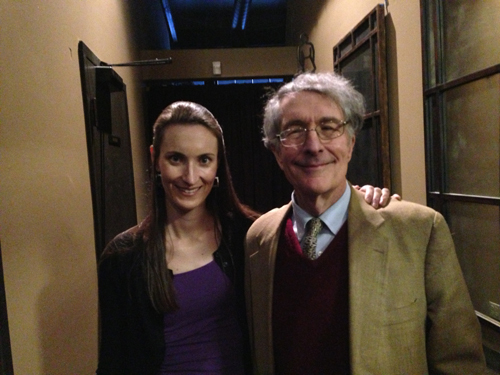
Apps are here to stay. How can we preserve the best practices of face-to-face interaction while engaging these tools which define a new generation?
What are the advantages of face-to-face interaction? We would say having the opportunity, as well as the obligation, to monitor how the other person is reacting to our message – whether it be a message of love, of disagreement, or threat. It is simply more difficult to ignore the ‘pragmatics’ of a statement when it is uttered in your presence – complete with tone of voice, with facial and bodily expression, y sobre todo, with eyes – looking at you directly, or squinting out of the corner of your eye, or averting your eyes altogether. And it is more difficult for others to ignore su sentimientos, pasiones, y la intención, así.
El reto de mantener la interacción cara a cara comienza en casa y continúa en la escuela. Si los padres tal modelo de la interacción directa con los otros y con los amigos y la familia, a continuación, los jóvenes van a entender su configuración y su eficacia. El mismo punto obtiene con respecto a la escuela – lo que los maestros y mayores modelo compañeros es lo que se aprende y se practica.
Una cosa es segura: if adults themselves avoid face-to-face interactions, then young people will as well. Huge dimensions of human experience will be lost – imagine Mona Lisa peering at her device, or Rhett Butler and Scarlett O’Hara communicating via Facebook or Twitter.
Thinking ahead perhaps ten years from now, what additional research should be done to evaluate the benefits and drawbacks of apps?
A question that we researchers love to hear! We’d be particularly interested in the effects, on young and old, of putting aside their devices for awhile, and spending time in ‘app-free’ entornos. No doubt there would be initial frustration but we speculate – more technically, nosotros hypothesize – that individuals will discover aspects of themselves, their environments, and their peers that have been obscured by our current over-dependence on devices and apps.
On the positive side, we are interested in the differences between apps that enable (allow us to do things that we could not do before) and apps that make us dependent (apps that cut off options and leave us without skills or understanding should we find ourselves deprived of the apps). Anything that we can do to promote app-enablement will be very important.
And as the ultimate reward there is app-transcendence – the capacity, at will, to toss aside the apps and the devices and let our imaginations and skills reign free. Our poster boy for app-transcendence: Steve Jobs!

Pictures are courtesy of Government of Alberta, Howard Gardner and Dwight School Seoul.
En La Búsqueda Global para la Educación, unirse a mí y reconocidos a nivel mundial los líderes de opinión, incluyendo a Sir Michael Barber (Reino Unido), DR. Michael Bloquear (EE.UU.), DR. Leon Botstein (EE.UU.), Profesor Clay Christensen (EE.UU.), DR. Linda Darling-Hammond (EE.UU.), DR. Madhav Chavan (India), El profesor Michael Fullan (Canada), El profesor Howard Gardner (EE.UU.), El profesor Andy Hargreaves (EE.UU.), Profesor Yvonne Hellman (Países Bajos), Profesor Kristin Helstad (Noruega), Jean Hendrickson (EE.UU.), Profesor Rose Hipkins (Nueva Zelanda), Profesor Cornelia Hoogland (Canada), Honorable Jeff Johnson (Canada), Señora. Chantal Kaufmann (Bélgica), DR. Eija Kauppinen (Finlandia), Secretario de Estado Tapio Kosunen (Finlandia), Profesor Dominique Lafontaine (Bélgica), El profesor Hugh Lauder (Reino Unido), Profesor Ben Levin (Canada), Señor Ken Macdonald (Reino Unido), Profesor Barry McGaw (Australia), Shiv Nadar (India), Profesor R. Natarajan (India), DR. PAK NG (Singapur), DR. Denise Papa (Estados Unidos), Sridhar Rajagopalan (India), DR. Diane Ravitch (EE.UU.), Richard Wilson Riley (EE.UU.), Sir Ken Robinson (Reino Unido), Profesor Pasi Sahlberg (Finlandia), El profesor Manabu Sato (Japón), Andreas Schleicher (PISA, OCDE), DR. Anthony Seldon (Reino Unido), DR. David Shaffer (EE.UU.), DR. Kirsten Immersive Are (Noruega), Canciller Stephen Spahn (EE.UU.), Yves Theze (Lycee Francais EE.UU.), Profesor Charles Ungerleider (Canada), Profesor Tony Wagner (EE.UU.), Sir David Watson (Reino Unido), Profesor Dylan Wiliam (Reino Unido), DR. Marcos Wormald (Reino Unido), Profesor Theo Wubbels (Países Bajos), El profesor Michael Young (Reino Unido), y el profesor Zhang Minxuan (De China) a medida que exploran las cuestiones de educación cuadro grande que todas las naciones se enfrentan hoy. La Búsqueda Global para la Educación Comunitaria Página
C. M. Rubin es el autor de dos ampliamente leído serie en línea por la que recibió un 2011 Premio Upton Sinclair, “La Búsqueda Global para la Educación” y “¿Cómo vamos a Leer?” Ella es también el autor de tres libros más vendidos, Incluido The Real Alice in Wonderland.
Siga C. M. Rubin en Twitter: www.twitter.com/@cmrubinworld


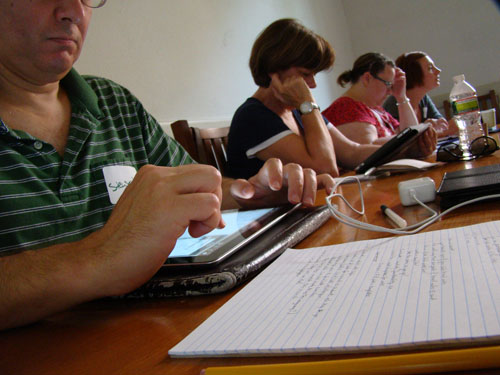
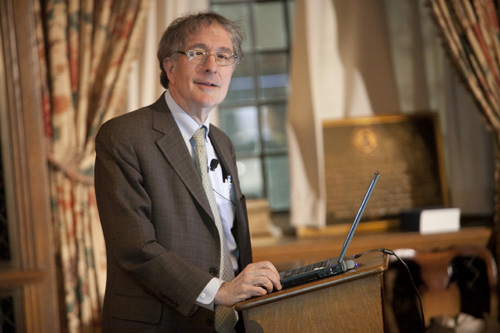
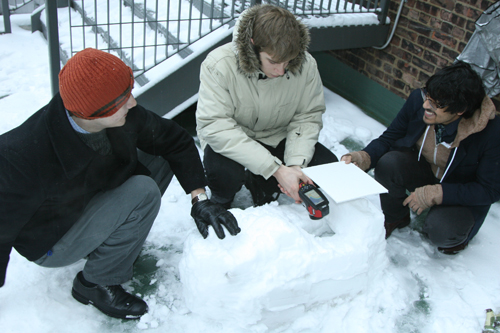
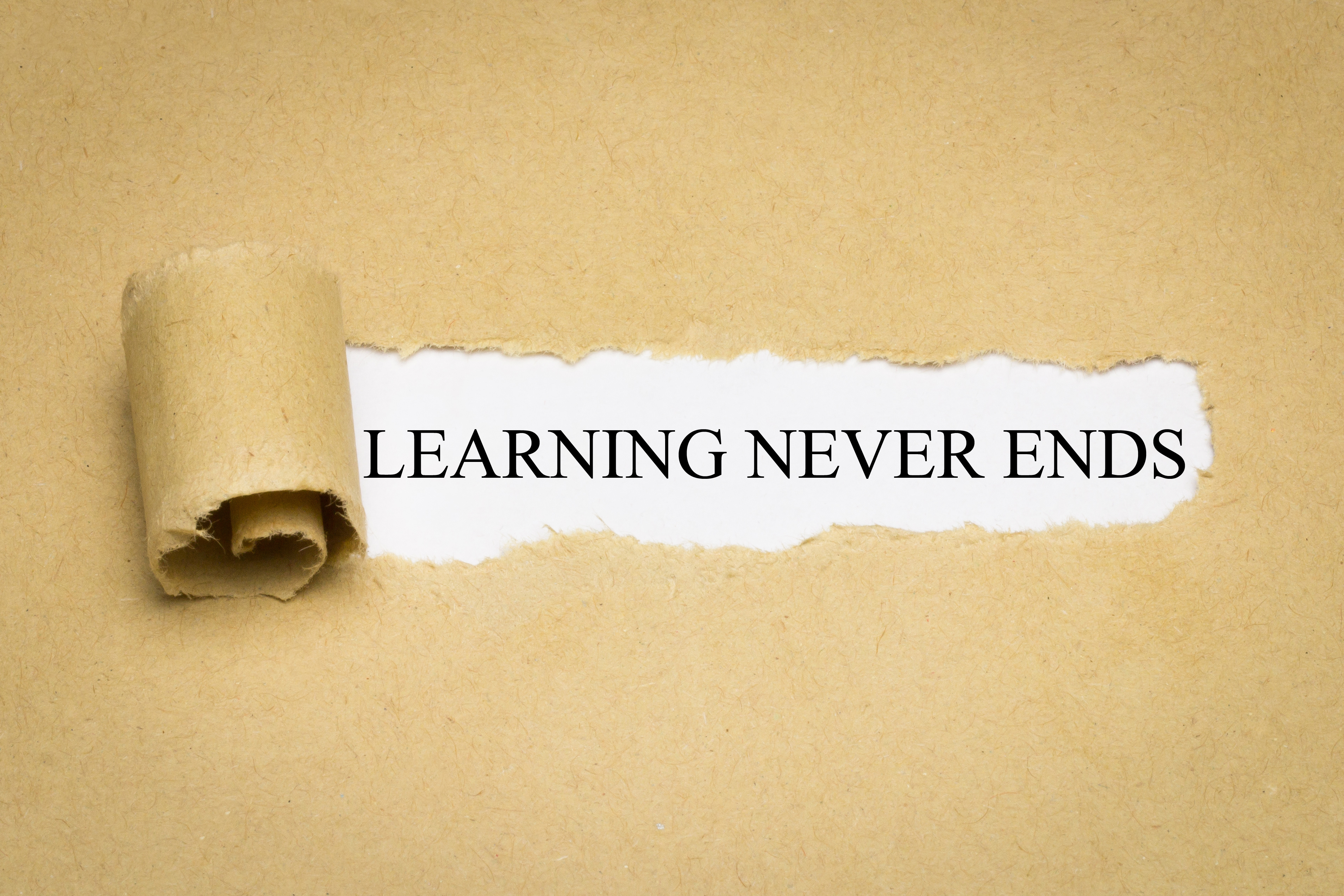
Comentarios recientes